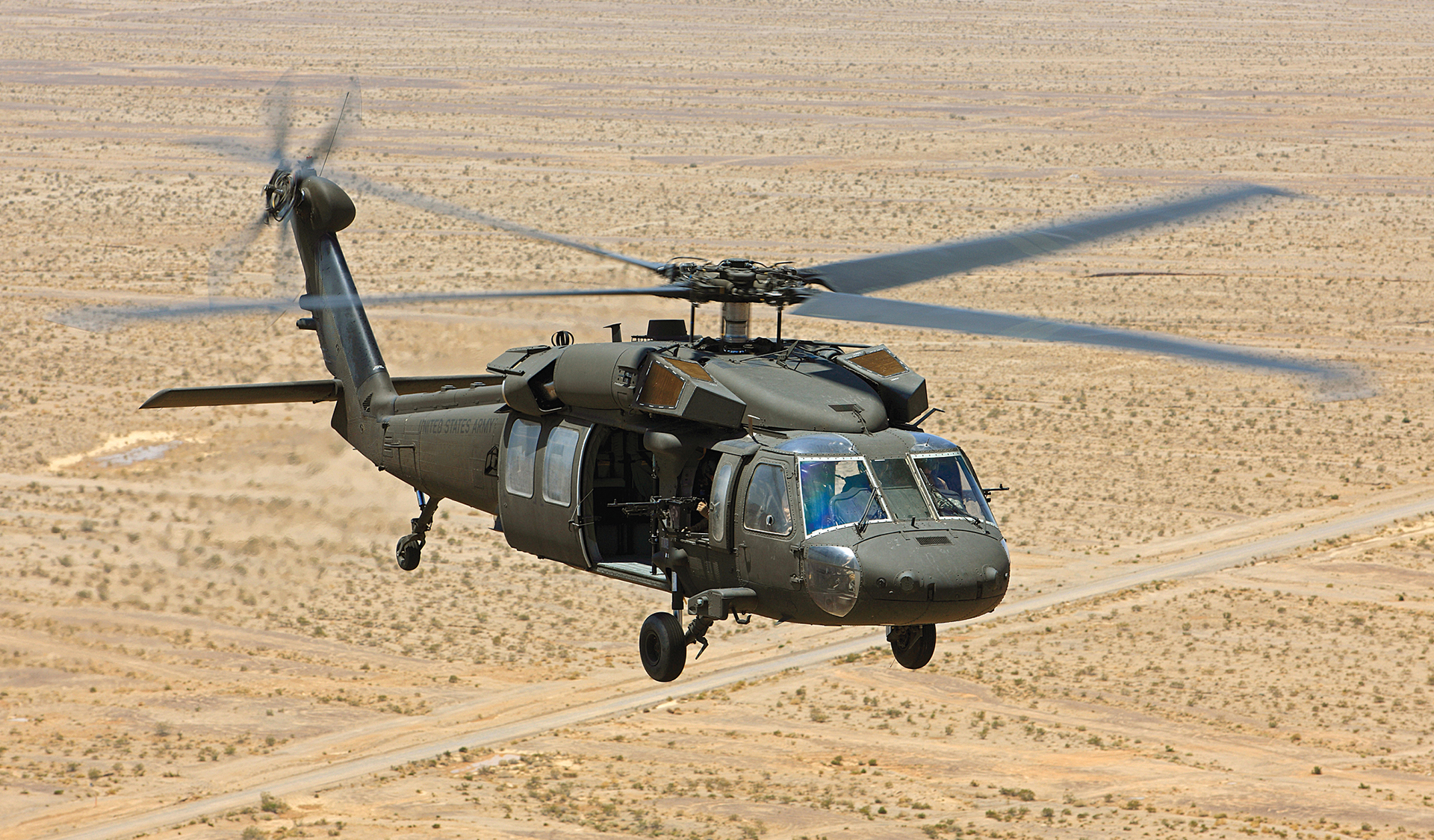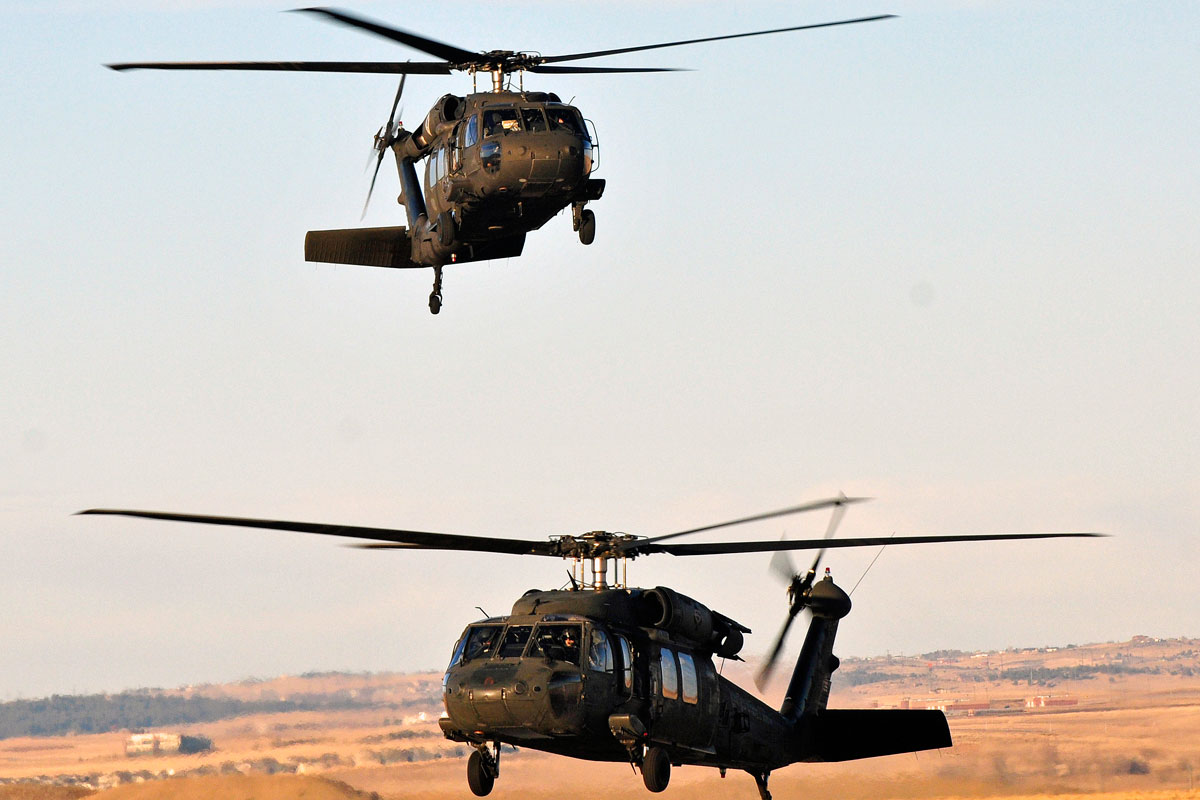Trip Ready: Making Sure Ideal Problem for Your UH 60 Helicopter
Trip Ready: Making Sure Ideal Problem for Your UH 60 Helicopter
Blog Article
Understanding the Mechanics and Design Behind Uh 60 Helicopters
The UH-60 helicopter, commonly called the Black Hawk, stands as a peak of modern rotorcraft innovation, personifying a mix of robust engineering and complex technicians. From its inception to its present models, the evolution of this aircraft showcases a combination of advancement and practicality. As we peel off back the layers of the UH-60's style, a world of detailed systems and careful design emerges. Understanding the auto mechanics and design behind this functional aircraft unveils a realm where precision satisfies power, and where each element plays a critical role in achieving flight.
Background of UH-60 Helicopters
The history of UH-60 helicopters traces back to the late 1970s when the USA Military sought a advanced and functional energy helicopter to replace its aging fleet. In response to this demand, the Sikorsky Airplane Corporation developed the UH-60 Black Hawk helicopter. Presented in 1979, the UH-60 swiftly became a staple in military procedures because of its impressive capacities.
The UH-60 was created to master a variety of goals, including troop transportation, medical discharge, electronic war, and unique operations. Its capacity to adapt to various roles made it a valuable possession to the U.S. uh 60. Military and other army forces around the globe
Throughout the years, the UH-60 system has undergone a number of upgrades and variations to improve its performance and equal progressing mission demands. These helicopters have actually seen substantial solution in disputes such as the Gulf Battle, Afghanistan, and Iraq, showcasing their reliability and versatility in varied functional settings. The UH-60's abundant background is a testament to its long-lasting legacy as a leading energy helicopter.

Engine and Power Systems
Making use of cutting-edge propulsion modern technology, UH-60 helicopters are outfitted with innovative engine and power systems to make sure ideal performance and reliability in an array of functional situations. The UH-60, typically called the Black Hawk, is powered by 2 General Electric T700-GE-701D engines, each with the ability of providing up to 1,940 shaft horse power. These turboshaft engines supply the needed thrust for the helicopter to execute its goals successfully, including army transport, medical evacuation, and fight assistance.

Blades System and The Rules Of Aerodynamics
Exactly how do the rotor system and the rules of aerodynamics of UH-60 helicopters add to their operational efficiency and trip abilities? The rotor system of the UH-60 helicopter plays an important duty in giving lift and propulsion.
The rules of aerodynamics likewise play an essential role in the efficiency of UH-60 helicopters. The streamlined fuselage and blades blade style reduce drag, permitting the helicopter to accomplish higher rates and much better fuel performance. The aerodynamic layout of the UH-60 likewise adds to its capacity to operate in varied environmental conditions, consisting of warm temperatures and high elevations.
Avionics and Flight Control Systems

In its detailed sychronisation with the blades system and aerodynamics of UH-60 helicopters, the avionics and trip control systems form a critical network of innovations forming the aircraft's functional capabilities. Avionics incorporate the electronic systems utilized for interaction, navigation, and checking various airplane features. In the UH-60, these systems include electronic display screens, communication radios, general practitioner navigation, weather condition radar, and auto-pilot systems. These avionics systems provide vital information to the pilots, improving situational recognition and guaranteeing secure and reliable procedure of the helicopter.
The flight control systems of the UH-60 are accountable for equating the pilot's inputs right into the ideal changes to the rotor system, guaranteeing steady flight and ability to move. These systems include hydraulic actuators, servos, and view it computer systems that function with each other to regulate the tail and main rotors, as well as various other flight control surfaces. By exactly handling the helicopter's trip characteristics, these systems allow pilots to do a large range of goals, from transportation and search-and-rescue to battle procedures, with accuracy and self-confidence.
Function and Applications in Air Travel
Avionics systems in UH-60 helicopters incorporate a variety of digital systems that aid in navigating, communication, tracking, and controlling different airplane functions. These systems consist of electronic display screens, autopilot systems, interaction radios, GPS navigation tools, and weather radar. Furthermore, these systems incorporate safety and security functions such as autopilot modes, terrain recognition alerting systems, and security augmentation systems to improve the total safety and functional capacities of the UH-60 helicopters in various objectives, consisting of army transport, medical discharge, search and rescue, and airborne firefighting.
Conclusion
Finally, the UH-60 helicopter is a functional aircraft with a rich history and advanced design. Its engine and power systems, blades system, the rules of aerodynamics, avionics, and flight control systems redirected here all collaborate to make it a effective and trustworthy equipment. The UH-60's role and applications in aviation are large, ranging from armed forces procedures to look and save goals. Its proceeded growth and usage read the full info here show its importance in the field of aviation (uh 60).
In its complex control with the blades system and aerodynamics of UH-60 helicopters, the avionics and flight control systems form an essential network of technologies shaping the airplane's functional abilities.The flight control systems of the UH-60 are responsible for translating the pilot's inputs right into the ideal modifications to the rotor system, guaranteeing stable trip and ability to move. Avionics systems in UH-60 helicopters include a range of digital systems that help in navigation, communication, surveillance, and regulating different aircraft features. Furthermore, these systems incorporate safety and security attributes such as autopilot settings, surface awareness warning systems, and security augmentation systems to enhance the general security and operational capacities of the UH-60 helicopters in different objectives, consisting of troop transport, clinical emptying, search and rescue, and airborne firefighting.
Its engine and power systems, rotor system, aerodynamics, avionics, and trip control systems all work with each other to make it a reliable and dependable machine.
Report this page